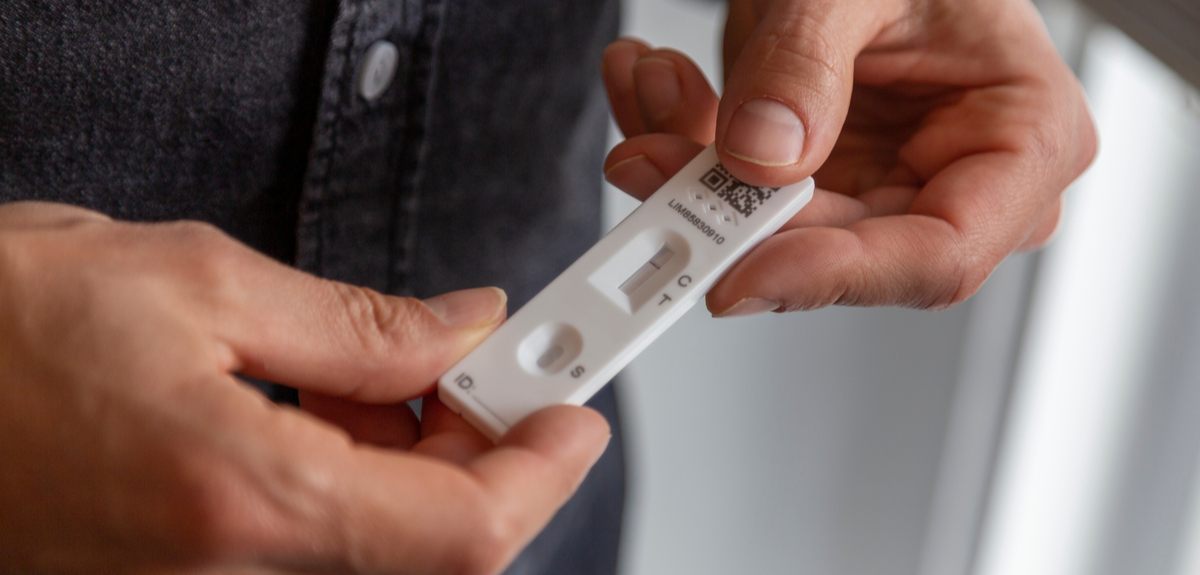
What Does the Lateral Flow Test Mean for COVID?
Introduction
In the ongoing battle against the COVID-19 pandemic, various testing methods have been developed to detect the presence of the virus in individuals. One such method that has gained significant attention is the lateral flow test. This article sheds light on the meaning, working principle, advantages, limitations, and usage of lateral flow tests concerning COVID-19.
What is a Lateral Flow Test?
A lateral flow cassette test is a type of immunoassay that detects the presence of a specific substance, such as a virus, in a liquid sample, like saliva or nasal swabs. The test provides quick and reliable results, making it an essential tool in mass screening programs and rapid diagnosis.
How Does a Lateral Flow Test Work?
The lateral flow test operates on a simple yet ingenious principle. It consists of a strip made of a porous material, such as nitrocellulose, which contains specific antibodies that can detect the target virus. The sample is applied to one end of the strip and migrates along the strip through capillary action.
Suppose the target virus is present in the sample. In that case, it binds with the antibodies on the strip, producing a visible reaction, typically in a coloured line. The line’s intensity indicates the virus’s presence and concentration, enabling quick interpretation of the test results.
Advantages of Lateral Flow Tests
Lateral flow tests offer several advantages, especially in COVID-19 testing. Some of these benefits include:
- Rapid Results: Lateral flow tests provide results within minutes, enabling swift identification of infected individuals.
- Ease of Use: These tests are designed to be user-friendly and can be conducted by healthcare professionals or even self-administered by individuals.
- Cost-Effectiveness: Lateral flow tests are relatively inexpensive compared to other testing methods, making them suitable for large-scale screening programs.
- Portability: These tests are compact and do not require specialized laboratory equipment, making them ideal for use in remote or resource-limited areas.
Limitations of Lateral Flow Tests
While lateral flow tests offer numerous advantages, they also have some limitations to consider:
- Sensitivity: Lateral flow tests may not be as sensitive as laboratory-based tests like PCR, leading to the possibility of false-negative results, particularly during the early stages of infection.
- Specificity: Cross-reactivity with other viruses or substances may result in false-positive results, leading to unnecessary anxiety and additional confirmatory testing.
- User Error: The accuracy of lateral flow tests heavily relies on proper sample collection and testing procedures. Incorrect usage could compromise the reliability of the results.
Use of Lateral Flow Tests for COVID-19 Detection
The COVID-19 pandemic has prompted the widespread adoption of lateral flow tests for detecting SARS-CoV-2, the virus responsible for COVID-19. These tests have been employed in various settings, including airports, schools, workplaces, and healthcare facilities, to screen individuals for the virus quickly.
Accuracy of Lateral Flow Tests for COVID-19
While lateral flow tests offer rapid results, their accuracy can vary depending on factors such as the viral load in the sample and the time since infection. Studies have shown that the sensitivity and specificity of these tests can be affected by several variables, emphasizing the need for proper administration and interpretation.
Role of Lateral Flow Tests in Controlling the Spread of COVID-19
Lateral flow tests play a crucial role in controlling the spread of COVID-19 by identifying infectious individuals promptly. These tests mitigate transmission when used with other preventive measures, such as mask-wearing and social distancing.
Different Types of Lateral Flow Tests for COVID-19
Several lateral flow tests have been developed specifically for COVID-19 detection. Some tests focus on identifying viral antigens, while others target specific antibodies produced in response to the virus. Each type of test has its unique advantages and limitations, catering to different testing needs.
Proper Usage and Interpretation of Lateral Flow Tests
Proper usage and interpretation are crucial to maximize lateral flow test accuracy. It is essential to follow the instructions provided with the test kit carefully. The results must be interpreted within the specified timeframe and by trained personnel when necessary.
Lateral Flow Tests vs PCR Tests for COVID-19
Polymerase Chain Reaction (PCR) tests are the gold standard for COVID-19 diagnosis due to their high sensitivity and specificity. However, PCR tests typically require laboratory equipment and have longer turnaround times. Lateral flow tests, on the other hand, offer rapid results but may sacrifice some accuracy.
Recent Developments and Advancements in Lateral Flow Test Technology
Researchers and developers continue to work on improving lateral flow test technology. Advancements in materials, reagents, and detection methods can enhance the sensitivity and specificity of these tests, furthering their utility in combating COVID-19 and other infectious diseases.
Challenges and Future Prospects of Lateral Flow Tests for COVID-19
Despite their usefulness, lateral flow tests face accuracy, interpretation, and scalability challenges. Prospects involve addressing these challenges and integrating lateral flow tests into comprehensive testing strategies to manage infectious disease outbreaks better.
Conclusion
lateral flow cassette tests have emerged as valuable tools in the fight against COVID-19. Their rapid results, ease of use, and cost-effectiveness make them essential components of screening and diagnosis programs worldwide. However, it is crucial to understand their limitations and use them appropriately to ensure accurate results.
FAQs
Q1: Are lateral flow tests as accurate as PCR tests for COVID-19?
A1: While lateral flow tests offer rapid results, they may not be as sensitive as PCR tests, leading to a higher likelihood of false-negative results. PCR tests remain the gold standard for COVID-19 diagnosis.
Q2: Can lateral flow tests detect COVID-19 in asymptomatic individuals?
A2: Yes, lateral flow tests can detect COVID-19 in asymptomatic individuals, especially when the viral load in the sample is sufficient.
Q3: Can lateral flow tests be used for mass screening in crowded places?
A3: Yes, lateral flow tests are suitable for mass screening in crowded places due to their rapid results and ease of use.


